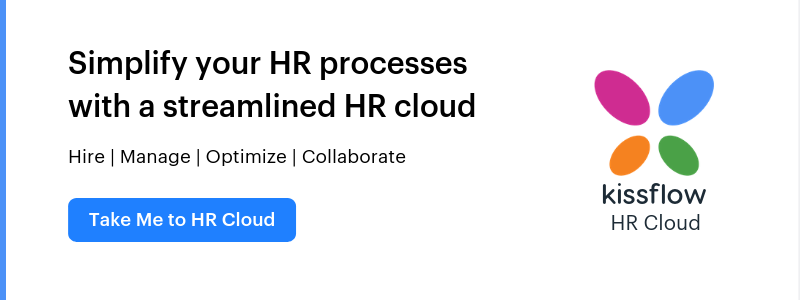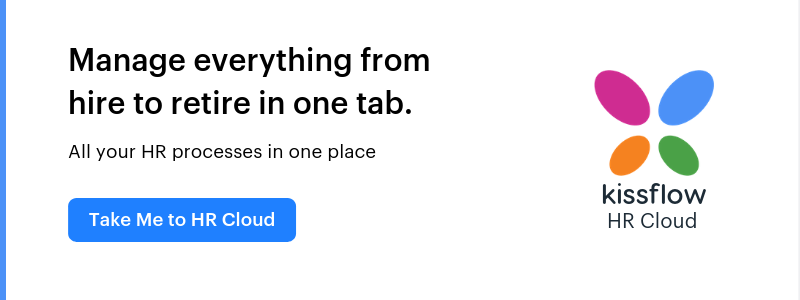Getting Employee Feedback Right in 2019
Unhappy employees are a liability to an organization. A Gallup research poll found that 87 percent of workers worldwide are disengaged in their job. Disengaged employees can cause serious financial damage to an organization. Dissatisfied employees cost U.S. businesses (both SMBs and enterprises) $450 - $550 billion per year.

Disinterested employees can commit anything from avoiding responsibilities to committing grave errors like stealing confidential data or resources. Whatever it is, when an employee is just not that into you, it is better to get to the bottom of the issue, before it starts affecting your organization’s bottom line. This is where employee feedback comes in.
Employee feedback results offer a baseline assessment of where you’re at and what’s wrong with your organization. Often, it might seem like a case of preparing a questionnaire, having employees fill it out, and then analyzing results. But, there’s a lot more to employee feedback surveys than that. Here’s how you can get employee feedback right.
What is employee feedback?
Employee feedback allows organizations to determine how their workers feel about the management, office environment, team members, the employee training process, career opportunities, and more. It helps organizations to make conscious choices about what they should stop doing, continue doing, and start doing to keep their employees satisfied and motivated.
Why is employee feedback important?
Frequent employee feedback helps businesses measure fluctuations in the employee pulse when a change or new initiative is implemented. At its core, employee feedback shows whether or not your workforce feels invested in your organization’s mission and success.
Employee feedback is important because it:
- Gauges employees’ opinions on existing benefits and policies
- Offers employees an option to voice their thoughts
- Analyzes the overall work environment
- Highlights organizational weaknesses and potential problems
- Measures employee engagement levels
- Determines the impact of a change in an organizational set-up
How to obtain effective employee feedback?
Employee feedback forms are a useful way to gather insights on employees. But they are not the only option available to measure the employee pulse.
Here are some ways that organizations can use to measure employee feedback effectively:
1. Online pulse survey:
Conducting short yet routine online pulse surveys will not only save the time and effort employers spend on employee feedback forms but will also allow them to benchmark the gathered data for comparison.
2. One-on-one:
Scheduling regular informal meetings with employees will give organizations a real sense of their employees’ experience and what needs to be done to make their tenure memorable.
3. Net promoter score:
Allowing employees to grade an organization using a modified version of HBR’s net promoter score will provide a clear picture of the existing work culture. A net promoter score above 50 indicates a positive organizational culture.
4. Exit interview:
Although exit interviews might not help you retain the employees who have already decided to leave your organization, they can help you uncover the reason behind employee turnovers, and offer insights on how to reduce them.
5. Intranet poll:
Collecting feedback on important organizational decisions through anonymous intranet polls will remove any fear of repercussions and encourage staff members to share their honest opinion.
6. Suggestion box:
Using good old suggestion boxes, organizations collect employee ideas and suggestions anonymously. While it may seem a bit old school, even today, organizations like Google use suggestion boxes to inspire ‘light bulb’ moments.
Sample employee feedback form questions
Just a short survey with specific questions can help organizations determine the engagement level of employees. By asking the right questions, organizations can spot reasons behind employee disengagement and develop specific training programs, targeted activities, and strategies to improve employee satisfaction.
Here are a few employee feedback form questions that organizations can’t afford to miss:
- Are you clear about your role and responsibility in meeting the business objectives?
- Do you spot an opportunity for your individual career growth within the organization?
- How satisfied are you with your job?
- Do your team members and supervisors provide the necessary support you need?
- Does your manager offer constructive criticism on your work?
- Do you believe you have enough training required for your role?
How to use employee feedback to grow
“Employees who believe that management is concerned about them as a whole person – not just an employee – are more productive, more satisfied, more fulfilled. Satisfied employees mean satisfied customers, which leads to profitability.” -Anne M. Mulcahy, former CEO of Xerox
It is impossible to improve employee engagement by just collecting employee feedback. In fact, just collating feedback without acting on it might reduce employee morale and increase cynicism within the workforce.
Organizations that conduct employee feedback surveys must be ready to do some meaningful follow-up unless they are ready to lose their employees’ trust. Organizations need to analyze the survey results and statistically benchmark them with the industry standards to understand where they stand.
By analyzing employee satisfaction levels using employee feedback forms, employers can spot best practices within the organization. If a specific department/team rates high on employee engagement scale, studying their behavior can offer valuable actionable insights that can be implemented in other departments to promote organizational growth.
Automating the employee feedback process
Employee feedback allows organizations to measure the extent to which workers feel valued and involved in their day-to-day activities. Employee performance feedback forms are the most common way used to measure employee engagement and the staff pulse.
Employee feedback surveys are not one-size-fits-all. They are unique to each organization and their situation. An organization’s culture, worker profile, management approach, and even physical location counts when it comes to the content of a feedback survey. The survey questions need to be dynamic and unique to draw effective results. Replacing ineffective paper-based employee feedback surveys with an automated employee feedback process. Best of all, organizations can do it right from their HR management solutions. An intuitive HR suite like Kissflow HR Cloud allows organizations get a pulse on every factor that affects employee satisfaction.
Whether organizations want to enhance employee engagement, determine job satisfaction, or obtain feedback on existing policies, Kissflow HR Cloud makes the job easy with digital forms, automated workflows, timely reminders, and visual-rich reports.
Summary
Today, employees have started valuing transparent work culture nearly twice as much of high compensation and benefits. To establish a transparent work culture, organizations should not only streamline communication but also listen to the needs and opinions of their employees.
Kissflow HR Cloud offers a variety of employee engagement tools to help businesses retrieve and analyze employee feedback. Whether you are planning to roll out new feedback survey, conduct employee polls, or conduct an AMA session, Kissflow HR Cloud provides all the tools you need. Organizations around the world use Kissflow HR Cloud to build a more productive and engaged workforce. Start your employee engagement journey today with a free trial.











